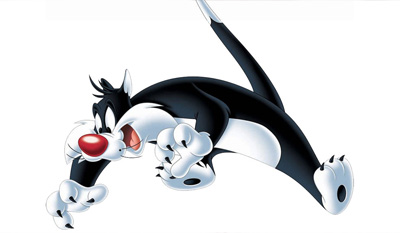Sylvester’s Stars

I credit my appreciation for classical music to watching endless hours of Looney Tunes as a younger person. Each episode featured recognizable orchestral music which accompanied the character’s antics and, even today, I can’t attend a symphony concert or play a classical CD without being reminded of an equally classic cartoon character, such as Foghorn Leghorn or Sylvester the Cat, staggering around with eyes rolled back and a ring of stars circling their heads.
These cartoon ‘headaches’, or course, were often self-inflicted in one way or another. Believe it or not, the same may hold true in the real world; the huge difference, however, is for those who suffer from frequent headache pain, there is nothing funny about it.
There is mounting evidence and increasing belief that certain types of headache pain may indeed be ‘self-inflicted’. Not intentionally of course, but, for example, someone who suffers from frequent morning time headache which is present when they wake up, may likely be creating it by clenching and grinding their teeth while sleeping. Sounds bizarre, but, if this headache is located at the temples or behind the eyes, occurs on both sides but switches sides, especially when associated with facial muscles which are sore to touch, then odds are high that it was caused by grinding of the teeth.
Taking anti-inflammatory pain medicines can help control the symptom, but it becomes very important to try and identify the possible causes. Clenching and grinding of the teeth during the day could be related to emotional stress, occupation or habit and can usually be controlled with behavior modification or other therapy. When we are asleep, however, we have no voluntary control and all of the rules change. The things that trigger a nighttime bruxism may not be obvious and can be challenging to diagnose.
One culprit, once often overlooked, is the possible presence of a sleep breathing disorder which may have multiple causes. Anything from restricted airflow through the nose, to normal loss of muscle tone associated with deep sleep, irritation from smoking, chronic pain elsewhere in the body, medication for depression, and many other conditions can disrupt normal sleep patterns and/or promote airway obstruction while asleep, all of which can trigger the grinding of the teeth which may be an attempt to help you breath.
Nighttime grinding and clenching force can be tremendous, and has been measured as much as 2-3 times greater than that during the day. Sore teeth, excessively worn teeth, fractured teeth, notching of the teeth at the gum line are all symptoms of nocturnal bruxism which may well be a sign of a sleep breathing disorder. It is also the origin of the strain and load on the muscles of the face and of the TMJ, resulting in facial pain and yes. . . . even the headache.
Careers have been spent and many books written attempting to understand and explain the complex interactions which take place between our nerves and muscles, our brain and our body. The simplest version says that our brain will do whatever it takes to keep our body alive. First and foremost, it has to breathe. Anyone suffering from frequent or chronic headache, including migraine, or other facial pain, should be aware of the possibility that breathing and sleep may well be playing a role.
My wish is that the only stars you should ever see are those in our magnificent Arizona sky and not those associated with Sylvester’s halo.
